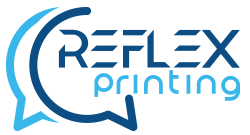The Birth of Digital Printing: A Turning Point in the History of Printing
- charlotteprud
- Feb 26
- 2 min read

The Digital Printing Revolution
Digital printing has revolutionized the way we produce and consume printed materials. In addition to enabling fast and cost-effective printing, it also offers unprecedented flexibility in terms of customization and variation of content. Continuous advances in digital printing technologies have expanded the possibilities and opened new horizons for printing in a multitude of industries.
The Evolution of Printing Technologies
Over the years, digital printing technologies have evolved significantly, from the early monochrome digital printers to today’s sophisticated high-resolution color printing systems. Advances such as the use of liquid ink, electrostatic toner, and inkjet printing techniques have improved the quality, accuracy, and versatility of digital printing. In addition, the integration of advanced sensors and control software has helped optimize machine performance and ensure consistent print quality.
Digital Printing and Sustainability
Digital printing also offers sustainability and environmental footprint benefits over traditional printing methods. By reducing material and energy requirements, as well as minimizing production waste, digital printing helps conserve natural resources and reduce greenhouse gas emissions. Additionally, the ability to print on demand reduces waste by eliminating the need for unused printed inventory.
Digital Printing and Personalization
One of the greatest benefits of digital printing is its ability to offer virtually unlimited customization and personalization of printed materials. With advanced graphic design software and sophisticated digital printing techniques, it is possible to create unique, tailor-made documents that meet specific customer needs. This increased customization capability is particularly valuable in the areas of marketing and communications, where it allows companies to create targeted, highly effective campaigns.
Applications of Digital Printing
Digital printing is widely used in a variety of industries and applications. In the commercial printing field, it is used to produce a range of documents such as brochures, flyers, business cards, and annual reports. In the packaging field, it is used to create labels, custom packaging, and product prototypes. Additionally, digital printing is used in the signage and advertising industries to produce signs, banners, and posters.
Digital Printing and the Transformation of Industries
Digital printing has profoundly transformed many sectors and industries, enabling more efficient processes, more personalized products and more targeted communication. In the fashion and textile sector, for example, digital printing has opened up new possibilities for the design and customization of clothing and fabrics. Similarly, in the healthcare sector, it is used to produce personalized medical devices and 3D anatomical models.
Digital Printing and Continuous Innovation
Digital printing continues to evolve with the advent of new technologies such as 3D printing, direct printing on rigid substrates and additive manufacturing. These advancements open up new possibilities in areas such as on-site spare part production, custom product manufacturing and product prototype design. As such, digital printing plays a crucial role in the continued innovation and transformation of industries globally.
In conclusion, the birth of digital printing marks a major turning point in the history of printing. This revolutionary technology offers significant advantages in terms of speed, quality, customization and sustainability compared to traditional printing methods.








Comments